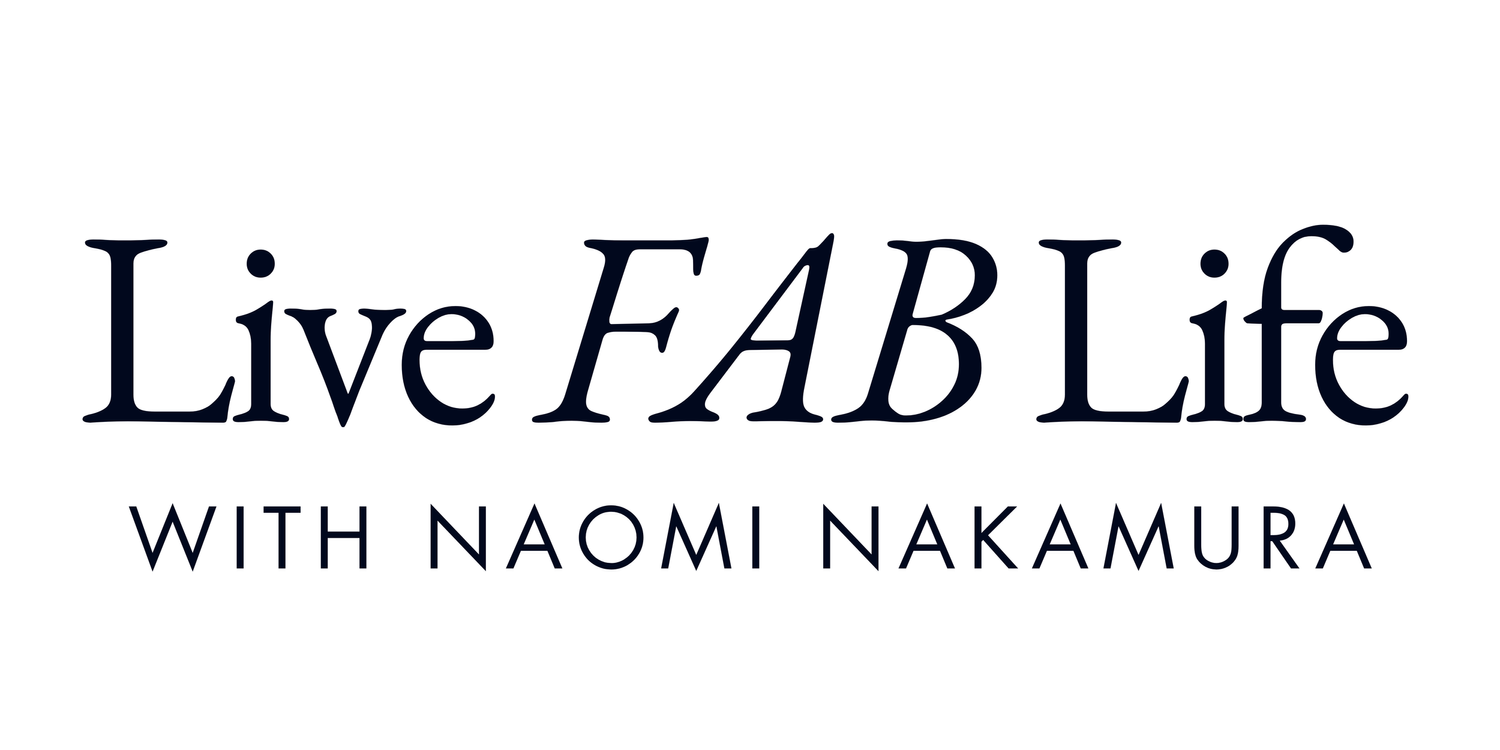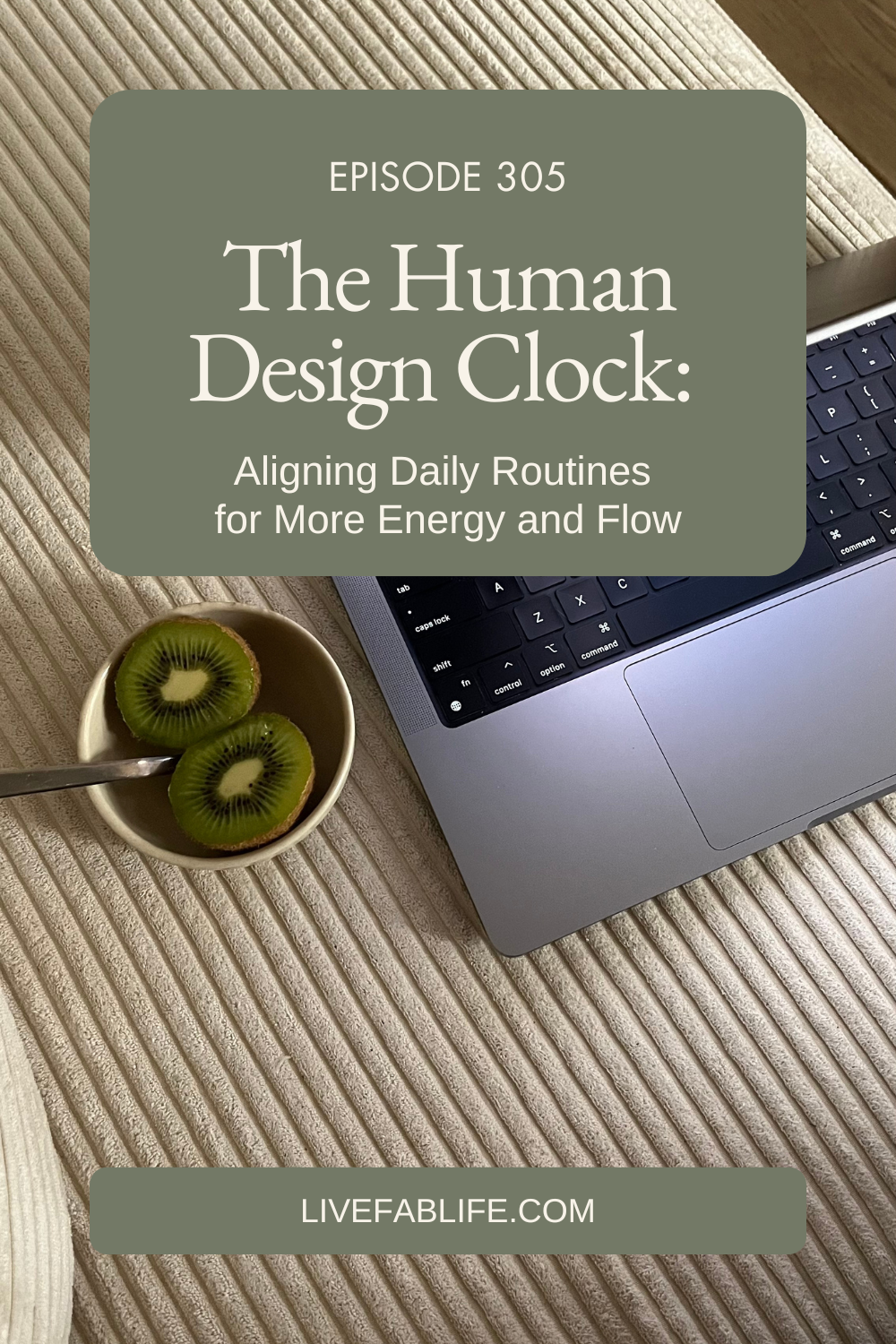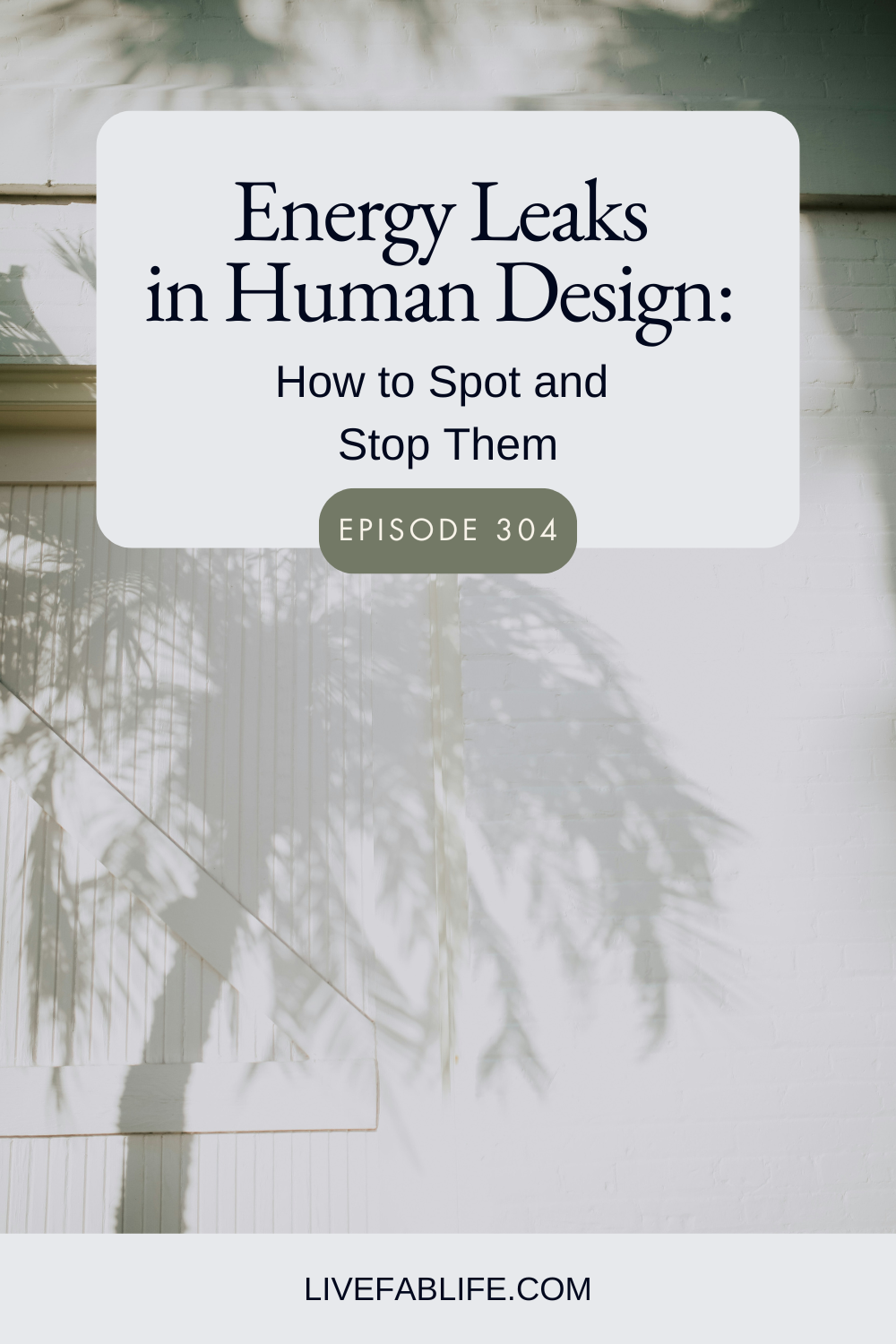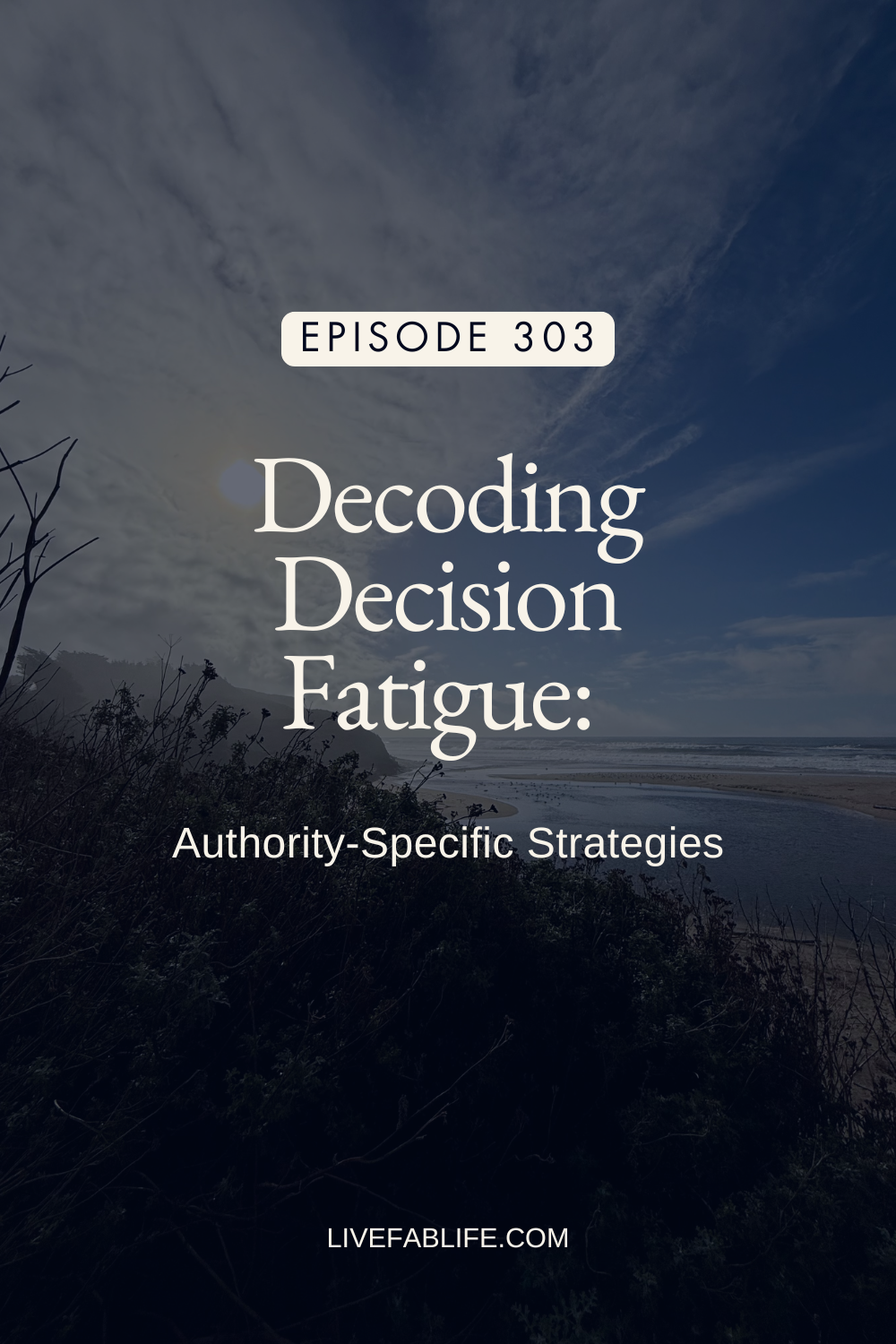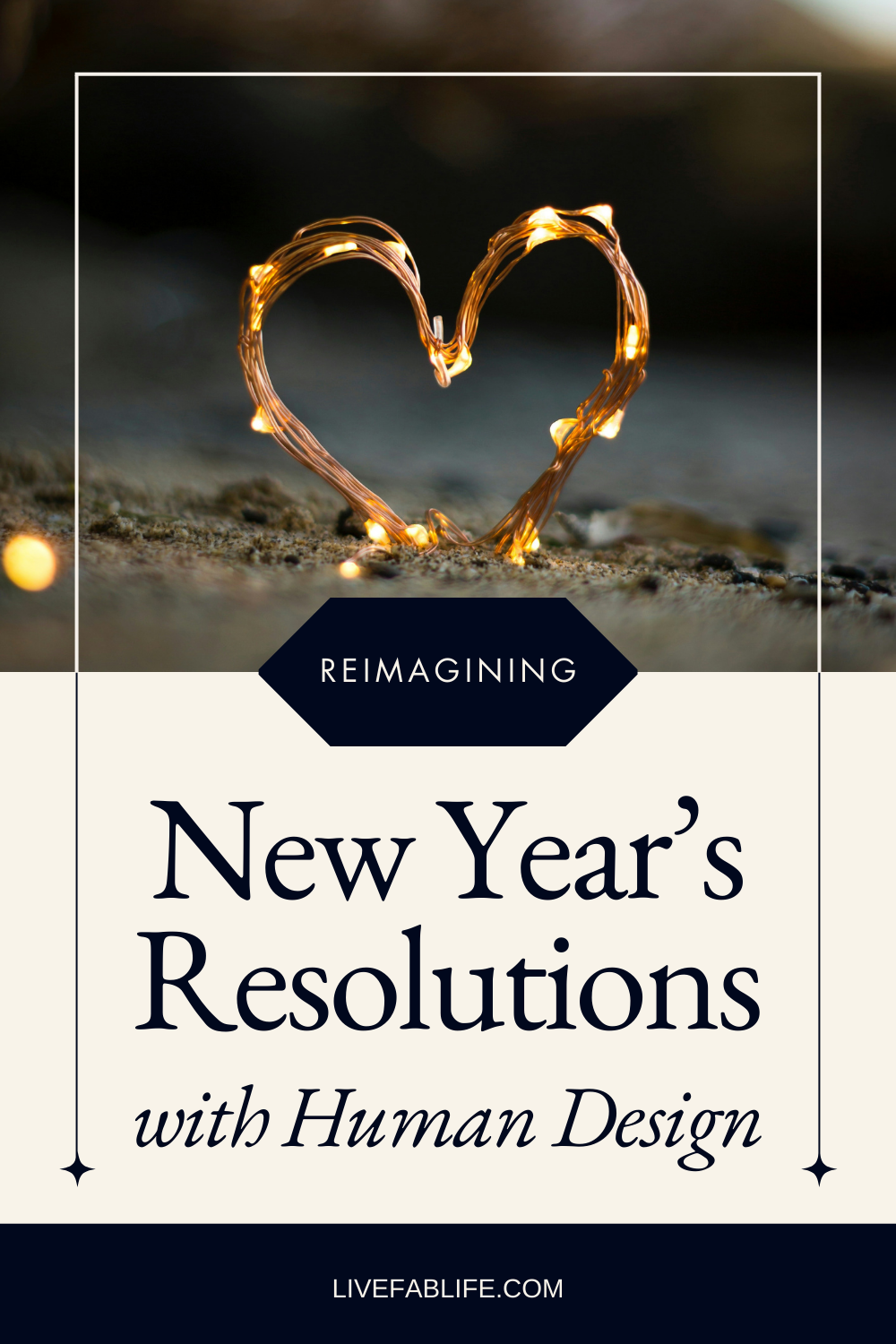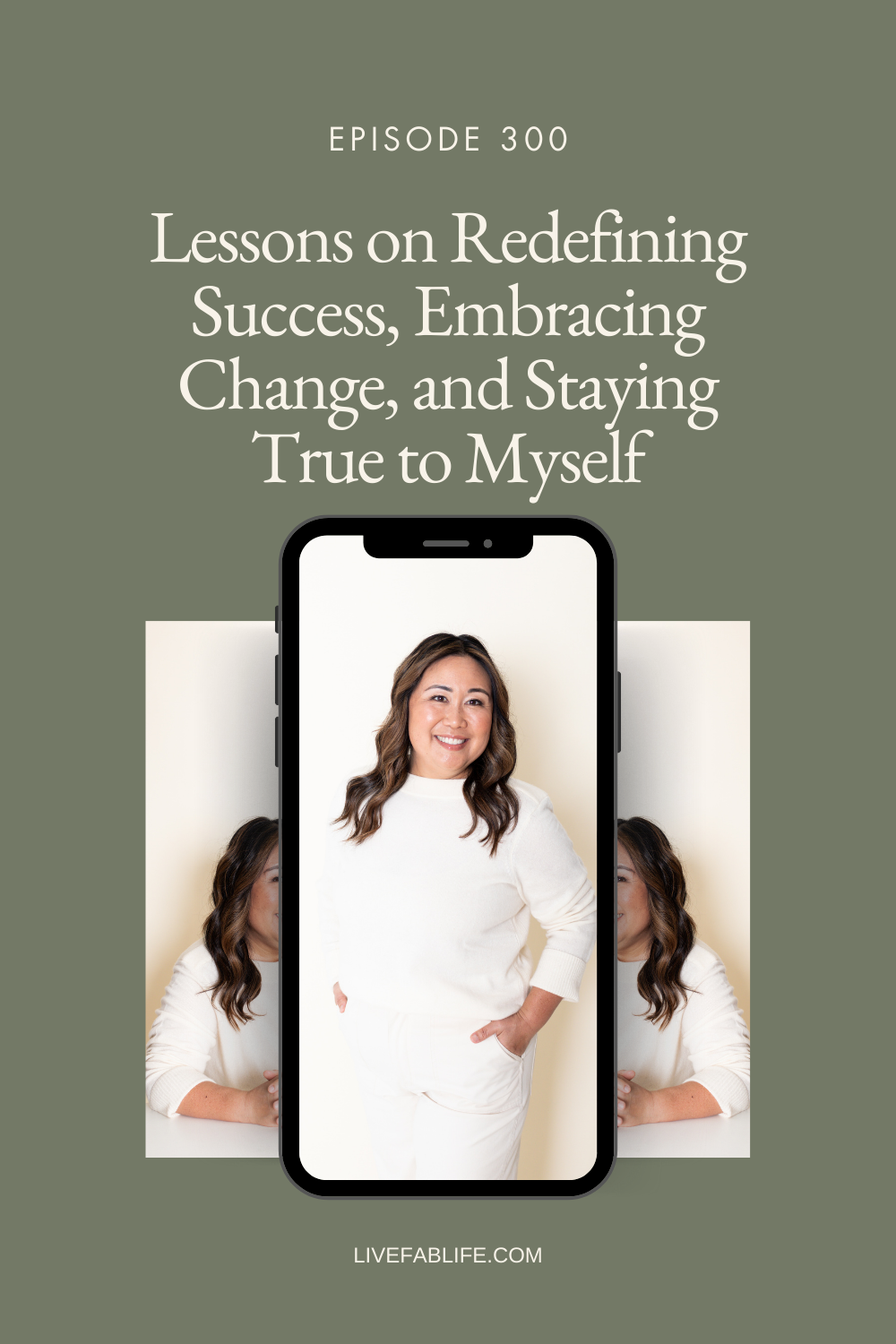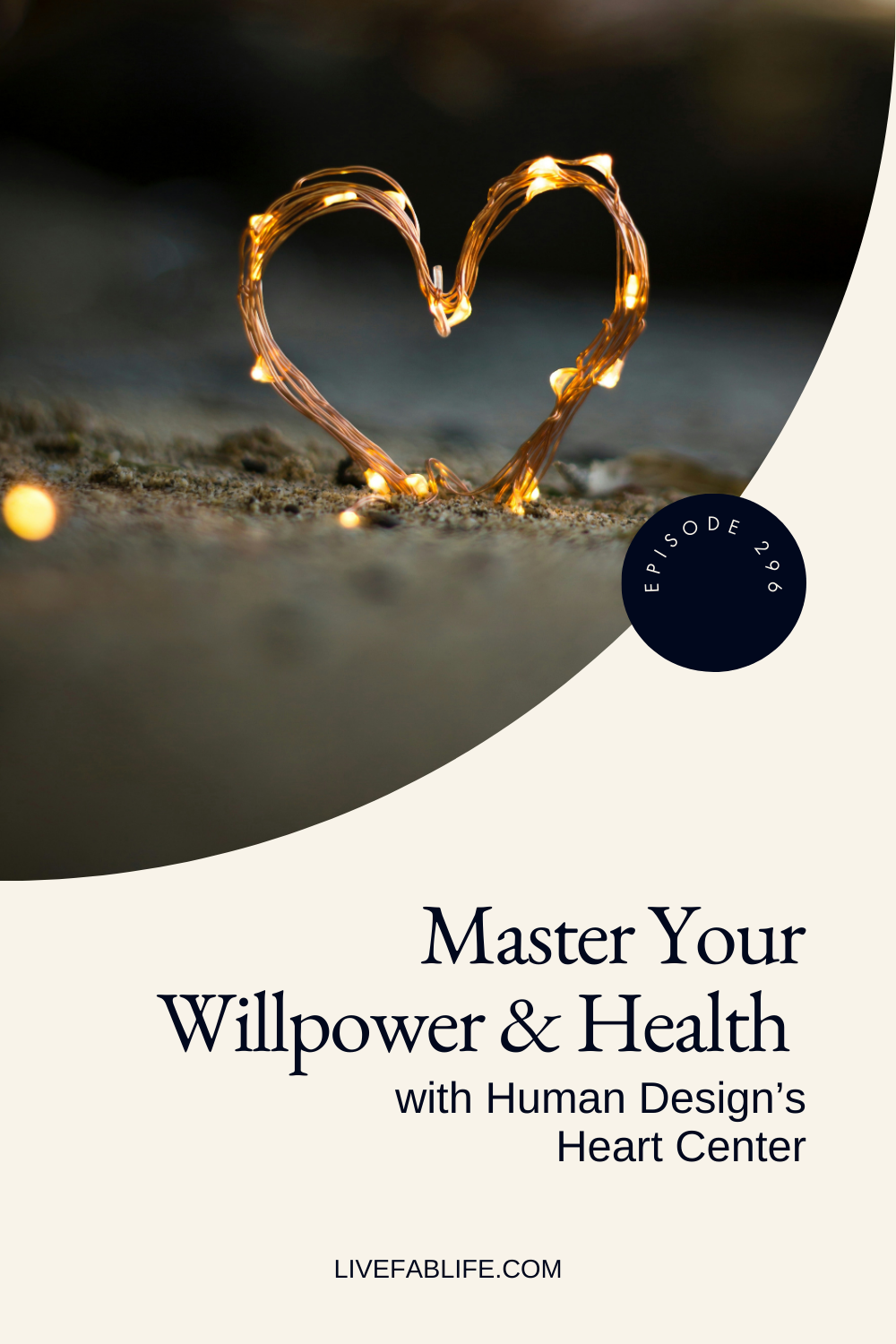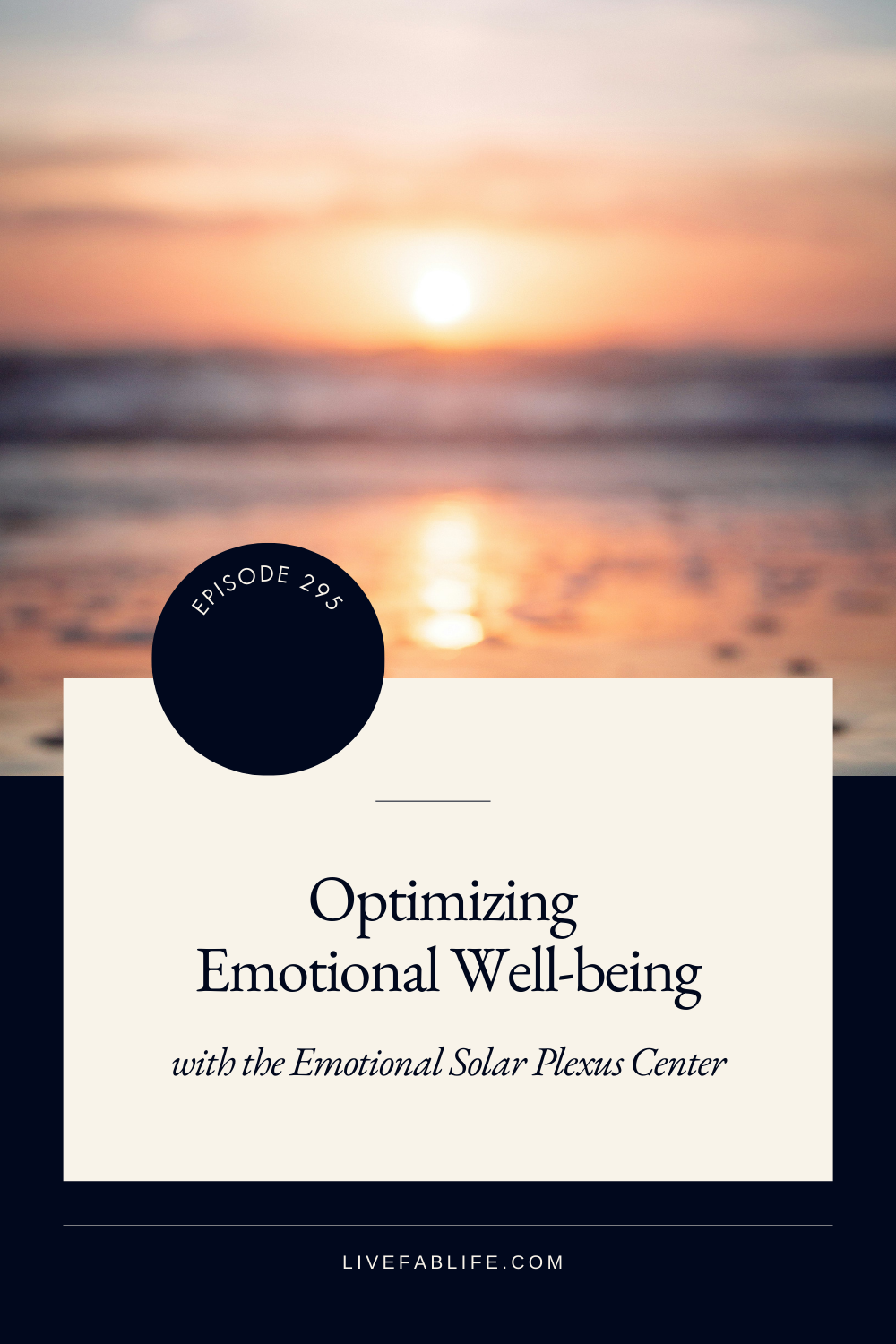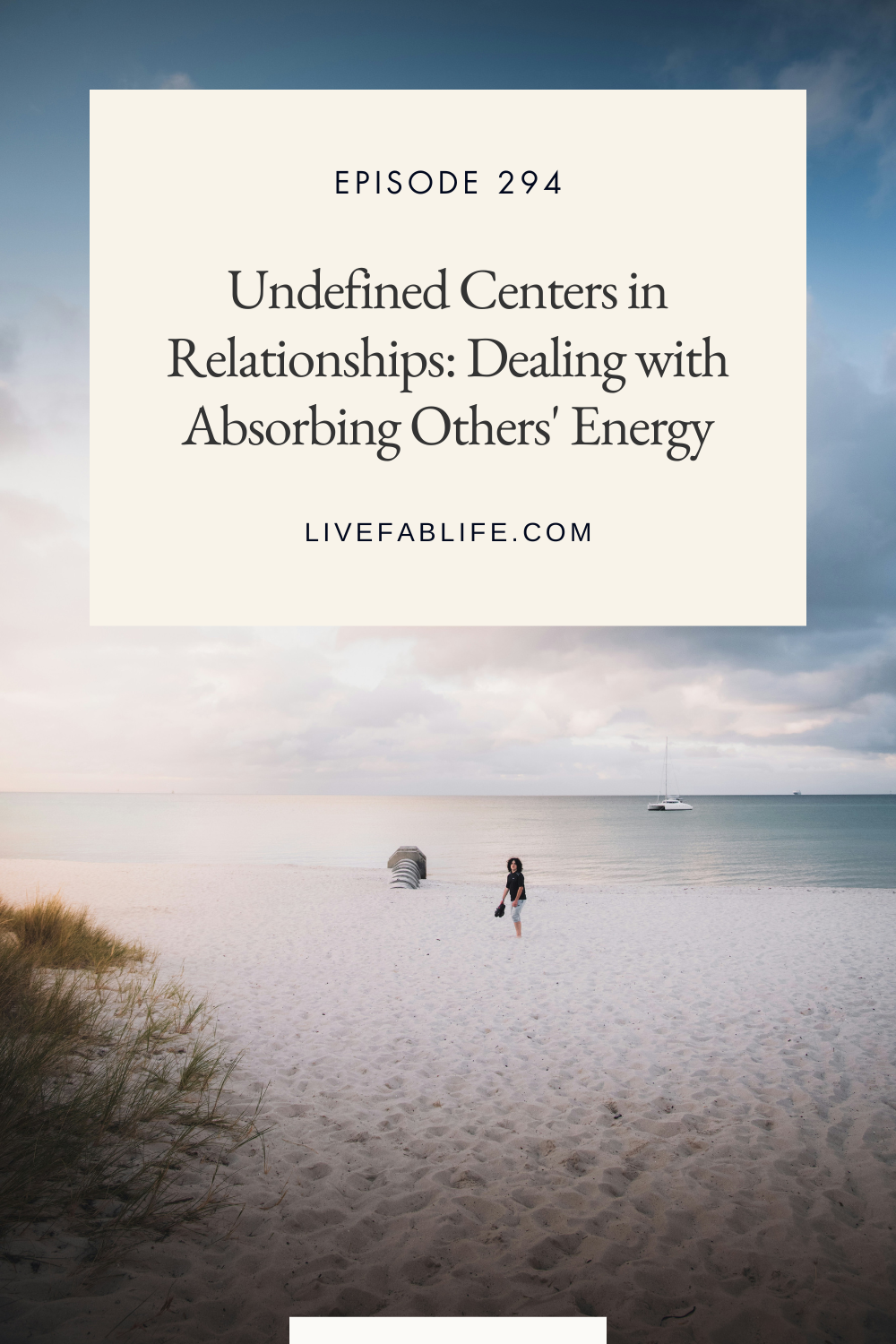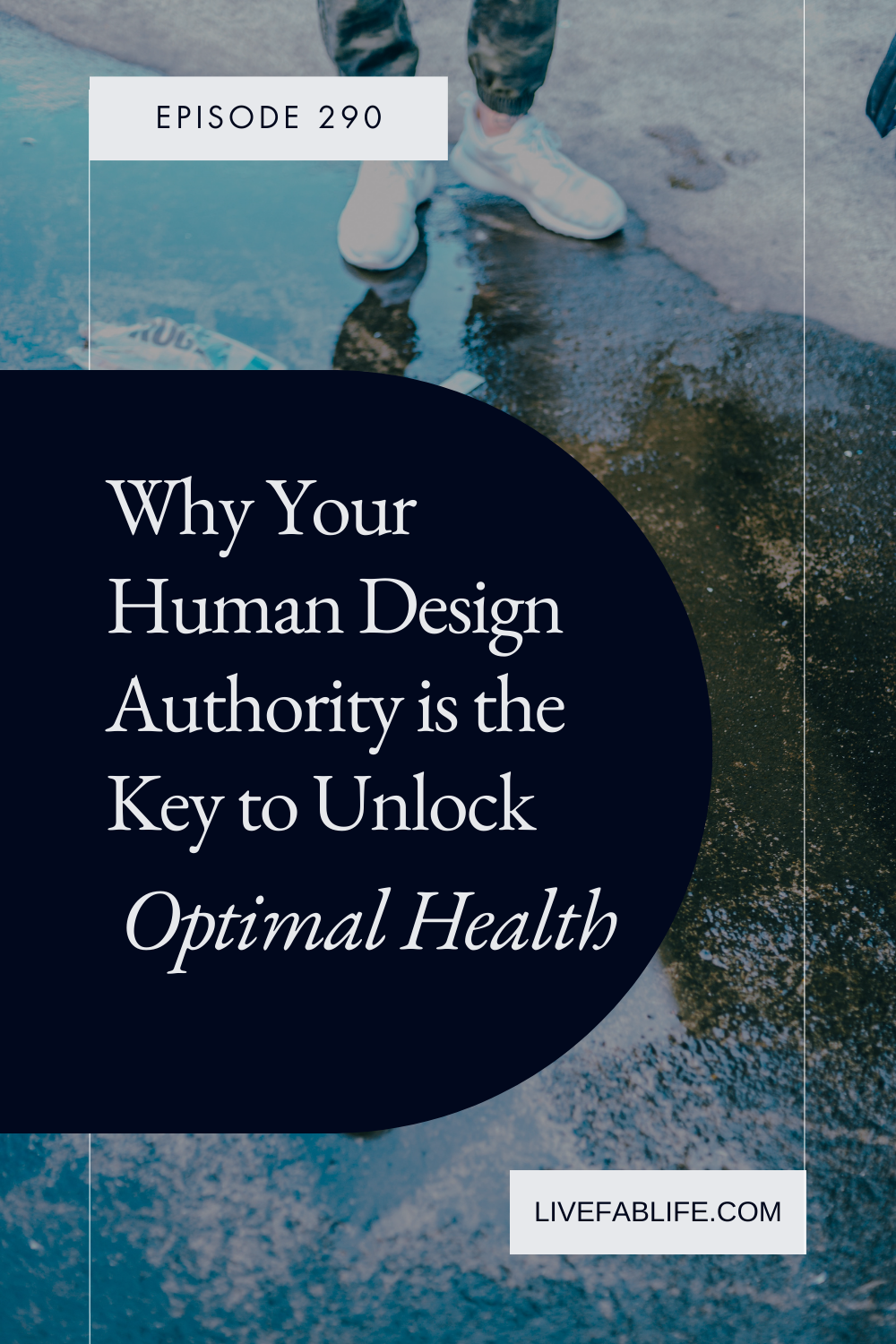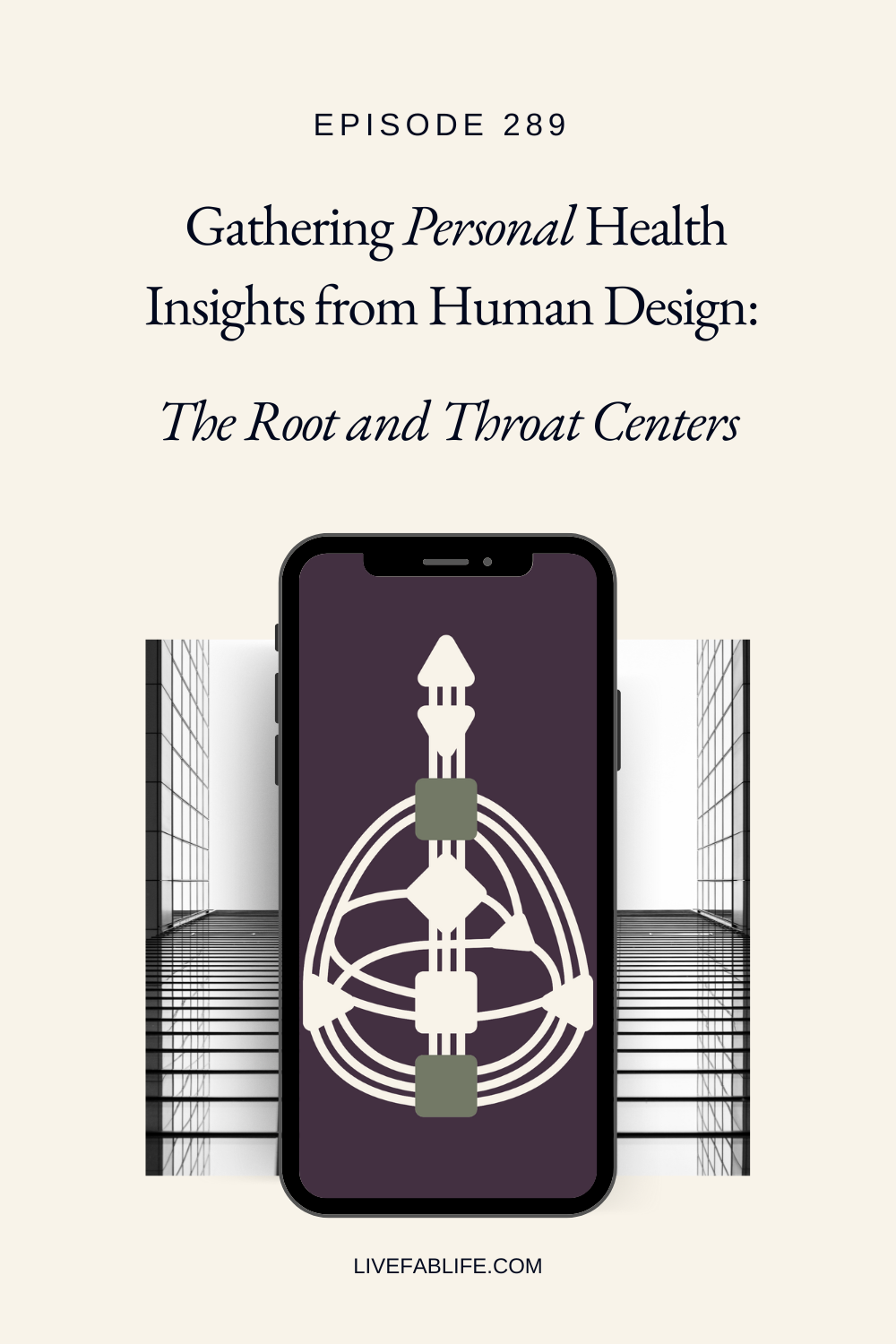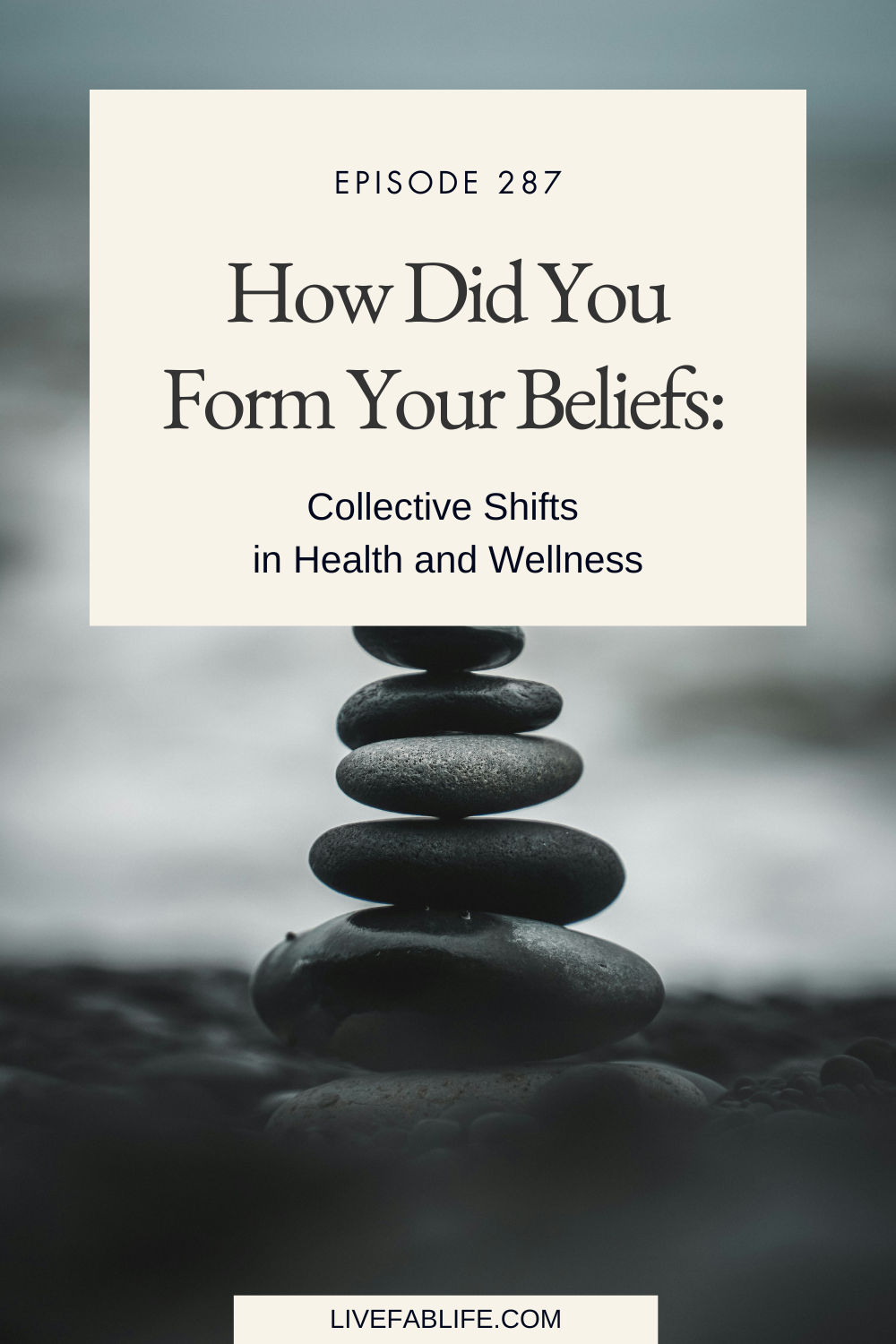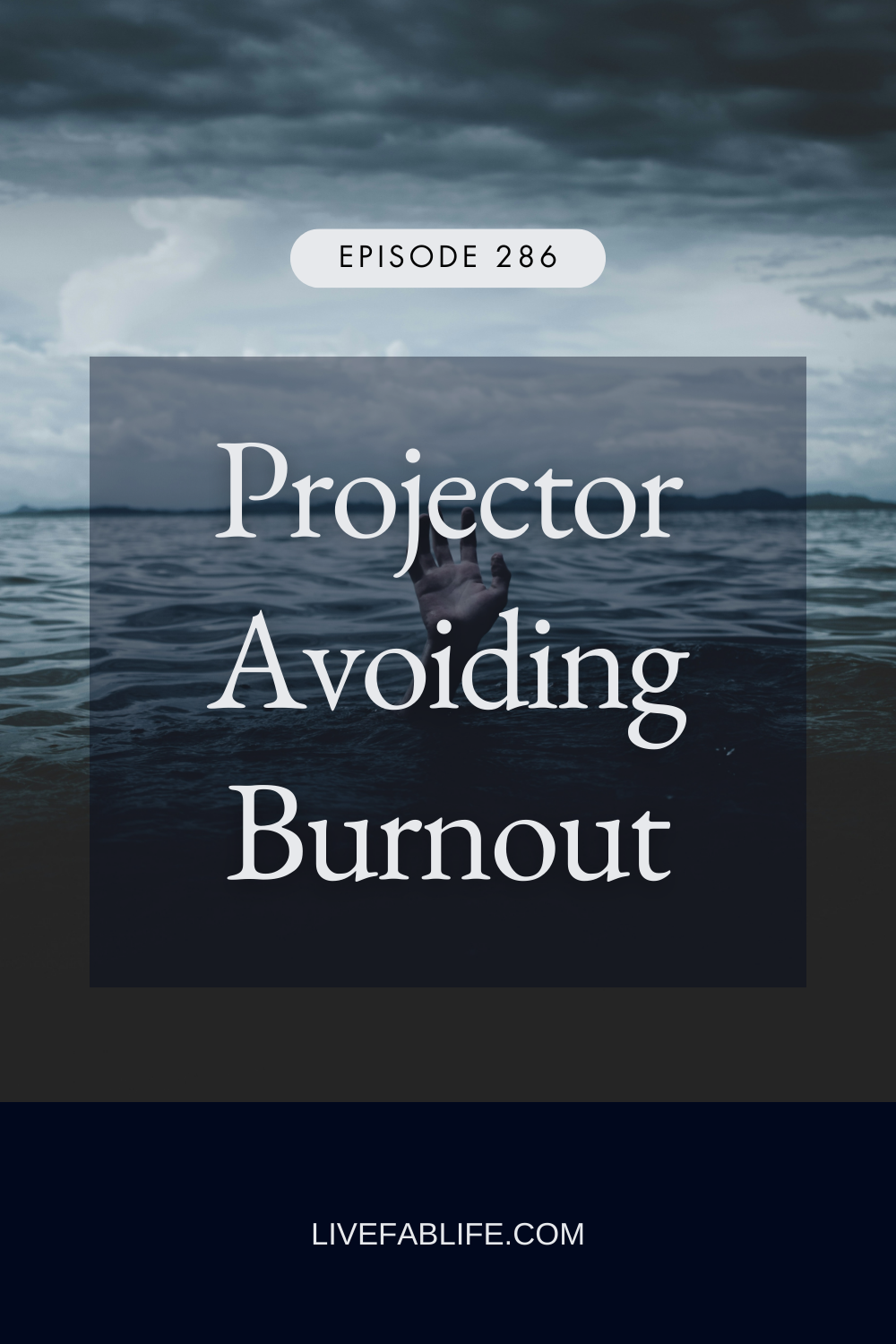Episode 191: The Sacral Center and Shifting My Relationship with Exercise and Workouts
As a health coach who has helped clients with energy management to reduce stress, fatigue, and burnout, the Sacral center is one aspect of Human Design that strongly resonates with me because those who defined Sacral centers know when “enough is enough.”
As someone with an undefined Sacral center, I’ve spent *a lot* of time thinking about how this shows up for me, as someone who struggled with adrenal depletion and overtraining.
So, in this episode, I share my reflections on how this presented in the past in my relationship with exercise, and how it’s helped me shift my relationship to workouts.
Listen to the Episode:
Mentioned in the Episode:
Episode 182: Human Design Non-Sacral Types and Their Strategies
FREE GUIDE: Get to Know Your Human Design + 15% off a Human Design Reading
Connect with Naomi:
Share the Episode:
“For those of us who are non-Sacral beings, Manifestors, Projectors, and Reflectors, the ability to moderate ourselves and know “when enough is enough” of something doesn’t come as naturally as it does for those who have defined Sacral centers. ”
Read the Transcript:
Hi there, and welcome back to The Live FAB Life Podcast. I'm your host Naomi Nakamura. Today I'm going to be sharing some personal thoughts and some reflections on the Sacral center.
As you have probably guessed, I've been intrigued with the Sacral center for a while. I mean, if you listen to the episodes I did on the Human Design Types, Episodes 182 and 183, I grouped them by which Types have defined Sacral centers, Generators and Manifesting Generators, and which Types don’t, Projectors, Manifestors, and Reflectors.
One of the reasons for this is because as I started learning about the nine energy centers, one of the things I learned about those who have defined Sacral centers is that they have an innate gift of “knowing when enough is enough.”
Hmmm, what does that mean?
I’ve spent a lot of time - a lot of time - thinking about what exactly does that mean, and, in what ways do I, as someone who has an undefined Sacral center, NOT know when is enough is enough?
What came to mind were things like, not knowing when enough is enough – to eat, to sleep, to work to workout. All that has a direct impact on our well-being.
So, I gathered, what this essentially means is that for those of us who are non-Sacral beings - Manifestors, Projectors, and Reflectors - the ability to moderate ourselves doesn't come as naturally to us as it does for those who are Sacral beings.
So, today, I want to talk to you about how this has shown up for me over the years, specifically in my relationship with fitness and working out. And as a side note, I’ll be doing another episode on how the Sacral center has influenced my relationship with food.
You’re familiar with my early days of getting my health coach certification, then you know that fitness and exercise were a pivotal part of that. It was the catalyst for my active interest in functional and holistic. In fact, my interest initially in it initially stemmed because of overtraining versus diet and nutrition, as in the case for most people.
For the first 30 years of my life, I didn’t have a relationship to exercise. I was not an active person – at all.
Growing up, I hated PE -. I was always the last one selected when picking teams. Gosh, I did the bare minimum to satisfy the physical education requirements in college. It just wasn’t something that I enjoyed, in hindsight, because I was never well-educated in it.
But then I was on the brink of my 30th birthday and a switch was flipped. I decided that I was tired of being an extremely inactive person and I was going to do something about it. So, I joined a gym that was just opening in my neighborhood and started working with a personal trainer.
Soon I discovered that I could do more, physically, than I ever knew I could. There was a hidden inner athlete in me that was emerging for the very first time. I learned that I was able and capable to do things I never imagined. It was thrilling and motivating to want to push and do more. What else can I do? How much farther can I go?
It led to enduring training and long-distance running, starting with running a 5k, then a 10k, then half marathons, and soon enough, I found myself training for the full marathon distance.
Without any understanding or even acceptance of the concept and importance of rest, I went from someone who was literally an inactive couch potato to running dozens of miles a week, on top of doing strength training and yoga as part of my overall training regimen.
It was going from one end of the spectrum to another. I didn’t know when enough was enough. I didn't have the ability to moderate myself.
When thinking about this, I was reminded of Gretchen Rubin’s book, Better than Before where she talks about Moderators and Abstainers.
Moderators can self-moderate. They can live by the 80/20 rule. Abstainers aren’t able to do this, so they have to completely avoid things.
Doesn’t this have strong parallels to having a defined vs an undefined Sacral center? The ability to self-moderate and know when enough is enough?
Those with defined Sacral centers are like Moderators, and those who have undefined Sacral centers are like Abstainers.
Thinking about my design, and I’m only speaking for myself here, I had a total lack of awareness when it came to my experience overtraining.
A lot of it came from a lack of education. I had no idea that there was such a thing as doing TOO MUCH exercise. As someone who did so little of it, the notion of too much exercise is harmful simply didn’t cross my mind.
The lack of education of what happens to the mind and body when there’s too much exercise. The stress it causes, how it affects not just the muscular-skeletal system, but the endocrine system – your hormones, the digestive system, all of it.
It was a lack of awareness, especially a lack of self-awareness. I was IN my body but disconnected from it.
I didn’t connect the dots between the leg pain I was experiencing with the IBS, digestive issues, poor sleep – all those things happening at the same time and how it was possibly tied to the stress of overtraining.
It was a lack of body awareness and mental awareness.
Ironic isn’t it, when I was doing all these things that healthy people do, but it was done to the extreme where it became unhealthy for me.
As I shared, the whole experience with overtraining was the catalyst that led me to functional medicine, holistic health and ultimately getting my health coaching certification. It was a pivotal part of my life and it led me to look at and learn my body and how it functions as a full system in a way that I’d never been taught before.
That’s what helped me become more aware of my body, in my mind, and ultimately with my emotions, eventually leading to the work that I’m now doing today.
So how did this change come about?
A couple of ways, beyond my undefined Sacral Center…
First, learning and understanding the profile lines in my Human Design chart. We haven’t talked about profile lines on the show yet, but I plan to do so in an upcoming episode. But your profile lines on your Human Design chart are thought of as your personality.
My profile lines are a 1 / 3. This means that I’m someone who has a deep need for learning and knowledge but also learns best experientially. So, I gain wisdom through experience. I need to experiment with things to understand something. Like experimenting to understand what enough is enough feels like.
You know, when I was finally accepted that I was burnt out and overtrained and learned about adrenal depletion and that I had it, I scoured through article after article in Running magazines, through running blogs because I wanted someone to tell me what to expect and how long I could expect to be out with this; how long it takes to recover, just how much rest I needed.
But guess what? I didn’t really find anything helpful because no one else was me. We're all unique and my situation was unique to me. So, it took a lot of experimenting and going through the trial-and-error process of figuring out what the best way for me to address this was.
And through that, I started to understand and gain some awareness of what enough is enough feels like in my body.
But here's the thing even about that. Our bodies are constantly changing, right? Mine does. What I like to call the “variables” change any given day – how much sleep I got, what I ate, what and how much stress am I under. These are all moving parts so what enough is enough feels like, can also change.
So, here are some tactical and, hopefully practical, ways that helped me understand what enough is enough feels like, and maybe they might be helpful for you too.
One is my Oura ring. It’s a wearable – a ring with a chip in it that I wear on my finger. It measures the quality of my sleep, my resting heart rate, body temperature, activity level, and then based on these data points gives me context on how well my body is recovered.
If I didn’t sleep well and my resting heart rate and body temperature are high, perhaps it might be a day to do an easy workout or even take a complete rest day.
Or I did sleep well and I’m trending in a good direction, so a higher intensity workout would be ideal today.
I’ve been wearing this Oura ring since January and it’s been hugely insightful. I know sometimes wearables can give us TOO much information to the point of overwhelm. I’ve experienced that before.
But while I feel like I do a pretty good job of paying attention to the cues my body sends me, having this external source of validation has built up my confidence in my ability to recognize the signals.
I used to live by data from a wearable, specifically my Garmin watch that I used for running to the point where it almost mentally broke me. So, then I went through a period where any type of data point from a wearable felt triggering for me.
It’s not those wearables are wrong; it was my relationship to them.
When I was able to shift my mindset and relationship to it, did I appreciate how it helps me, particularly in understanding what enough is enough feels like for me?
Now, it helps me by giving me parameters or what ideal trends look like for me. It reminds me to check in with myself.
For example, I might wake up one morning feeling cruddy even though I slept a decent amount of sleep, for me would be about 7ish hours, but still feel not great. In the past, I’d push through the cruddy feeling because, “Hey, I got 7 hours so that means I’m rested and should be able to do my workout.”
But now, when I look at the data from my Oura ring, it breaks down my sleep into how much of it was deep sleep, how much was REM, how much was light sleep, and how much of it I was actually awake. And after 9 months of using this, I’ve come to learn that the key for me is the amount of deep sleep I get.
So, I can get say, only 6 hours of sleep, but if a lot of it was deep sleep, I actually feel pretty rested. And I’ve learned that that data point also affects my resting heart rate, body temperature, something called heart rate variability and all those things have input into my recommended activity level for the day.
So, if I got 7ish hours of sleep but less than an hour of deep sleep and my resting heart rate was higher than my normal trend, then perhaps instead of that HIIT workout I had planned, I might do a gentle yoga workout instead.
Why does this matter to me?
Because I still have the urge to write out a workout plan for the week and stick to it, no matter what. It’s a constant…I don’t want to say battle, but it takes ongoing awareness to check in with myself to see what feels good today.
And the ability to not be so attached to what I had planned to do versus what will feel good today is, I feel, a huge area of growth for me, as I come to learn what enough is enough feels like for me.
This awareness, this insight is what makes me have confidence in myself that I can avoid falling into the trap of overtraining again.
It help me reframe my attitude and approach to working out, and completely change my mindset and my relationship with it.
Whereas before it used to be about calories out, about achievement, now it’s about moving my body in a way that feels good for me.
So, if you are someone who struggles or has struggled with overtraining, or with your relationship with fitness and exercise, maybe take a look at your Human Design chart and see where it can help you gain some insight and help you get to whatever it is you want your outcome to be.
If you don’t know where to get started with your Human Design chart, I have a free resource for you on my website. It’s a PDF called, “Getting to Know Your Human Design” Guide, and it will walk you through where to find your Human Design chart, and what some of the elements of it mean.
And, when you sign-up for it, you’ll receive a code for 15% off a chart reading with me, and the accompanying emails will walk you through exactly what to expect for a reading.
Thanks so much for listening. I hope by my sharing my experiences, it can help you to think about how Human Design can be a tool for you too.
I’ll see you right back here again next week. Bye for now!
Naomi Nakamura is a Health x Human Design coach who’s creating a healthier society through aligned energy.
She blends a bespoke mix of Functional Nutrition and Human Design to help others shift into alignment to leverage and correctly manage their energy to support their body, mind, and spirit.
She believes that when we embrace our authenticity and lean into our bio-individuality, we naturally live a life of freedom, empowerment, and optimal health.
Naomi resides in the San Francisco Bay Area and can often be found exploring the area with her puppy girl, Coco Pop!
Connect with Naomi on: Instagram
| Pinterest
